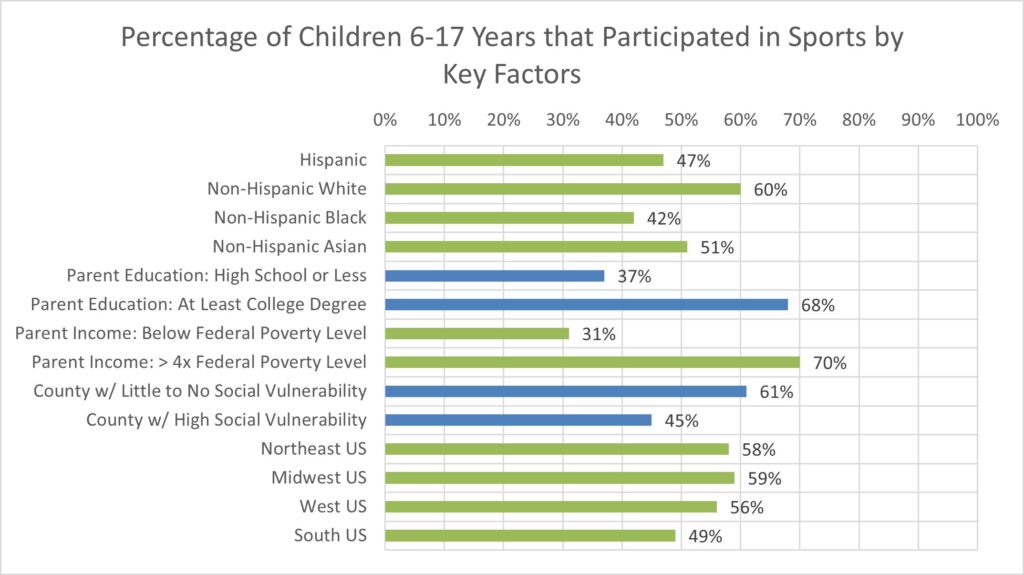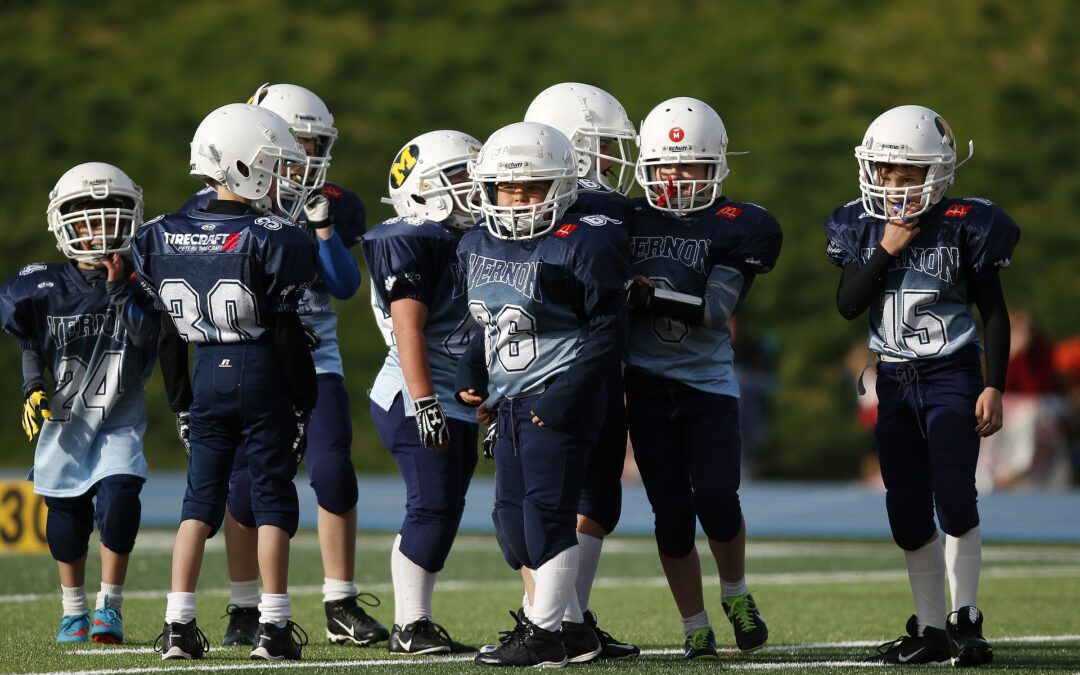Organized Sports Participation Among Children Aged 6–17 Years: United States, 2020
Black LI, Terlizzi EP, Vahratian A. National Center for Health Statistics (US). Published Date: 08/11/2022. Series: Data brief; no. 441
https://stacks.cdc.gov/view/cdc/119026
Take-Home Message
Sport participation was lower among children from a racial and ethnic minority, children whose parents had lower education levels or income, children who lived in counties with higher social vulnerability, and children who lived in the Southern United States.
Background
Youth participation in sports is associated with improved physical fitness and mental health. Understanding disparities in sports participation can help inform strategies to promote an active lifestyle among children and adolescents, positively impacting their physical and mental health.
Study Goal
Black and colleagues completed an analysis of data from the 2020 National Health Interview Survey to describe disparities in sports participation in the United States.
Methods
The authors analyzed data from the 2020 National Health Interview Survey. This survey is a nationally representative household survey that was conducted throughout the year. Parents reported if their child participated on a sports team or club or took sports lessons at school or in the community during the prior 12 months. The authors then extracted data about the family income as a percentage of the federal poverty level, race and Hispanic origin, geographic region (Northeast US, Midwest US, South US, or West U), social vulnerability of a county, and urbanicity (urban-rural classification) of a county.
Results
About half (54%) of children 6 to 17 years of age participated in sports during the prior 12 months (boys: 56%; girls: 52%). The authors reported, “Participation levels were lower among children from a racial and ethnic minority group, children whose parents had lower education levels and family income, children who lived in counties with higher social vulnerability, and children who lived in the South.”

Viewpoints
The results of this brief are a startling snapshot of sports participation in the United States. While it is established that early sports participation can positively impact an individual, significant disparities still exist. These findings indicate that sports participation relates strongly to socioeconomic status. Ultimately, a higher socioeconomic status may enable children to access sports. This is particularly apparent in that lower parental education, parental income, and geographic area with social vulnerability are all associated with less participation. These findings complement data from the Athletic Training Location and Services database that suggests these communities also have less access to athletic training services.
These data offered a unique snapshot of 2020, when many sports stopped in the spring because of the COVID-19 pandemic. The survey asked about sports participation over the past year, so it is unclear if the pandemic may influence these results. Furthermore, not every community is recovering from the pandemic the same. The authors acknowledge that it will be essential to see these analyses replicated with data from the 2022 survey to better understand patterns of sports participation after many of the restrictions associated with the pandemic have been eased/removed.
Clinical Implications
Sports medicine professionals must advocate for improved access to sports through local recreation organizations, schools, and other organizations. In regions with high social vulnerability, we need to encourage policymakers that investment in youth sports and physical activity can help improve the community’s health.
Questions for Discussion
What can we do as clinicians to positively impact team sports participation rates?
Written by: Kyle Harris
Reviewed by: Jeffrey Driban
Related Posts
Asian Pacific Society of Cardiology Consensus Recommendations for Pre-participation Screening in Young Competitive Athletes
A Lasting Impression: Youth Sport Participation and Healthy Habits as Adults
Previous Participation in Collision Sports is Related to a Decreased Quality of Life
Lower Socioeconomic Status Relates to Less Access to Athletic Training Services



I found this article interesting and relevant to my future career goals. As someone who came from the populations described in this study, I understand the importance of physical activity and sports participation, and I am grateful that I was able to participate. One thing I considered while reading was the importance of after-school programs such as the Boys and Girls Club or the Y as they offer children from these communities to participate in sports and other educational opportunities at little to no cost. My hope is to one day open my own facility incorporating strength and conditioning and athletic training services to communities similar to the one I grew up so that physical activity and treatments are accessible to every youth. Investing in youth sports and physical activity will positively impact community/public health.
This is a topic I feel passionate about. I am someone who falls into many of the populations described in the article. I was privileged to be able to get involved in sports during my developmental years because of the fundraising opportunities I had access to. Sports and athletics do so much more than encourage physical well-being. The populations discussed in the study may also face additional stressors at home or in school that other students may not even have to consider. All children and young adults need safe outlets for these stressors. Sports can encourage team work, communication, discipline, self-confidence, mental health etc. All of these are important during our developmental years. For some populations these values are not taught at home whether the resources aren’t there or for any other reason. Schools and athletic programs need to come up with ways to offer affordable means of participating in sport whether thats through fundraising, scholarship programs, recreational teams, after school programs etc.